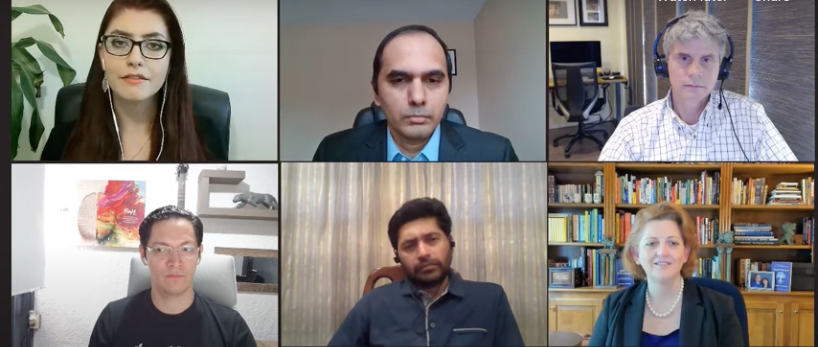Crisis Spurs Rapid Change for 2020’s Top Data Innovators

This virtual roundtable with five of our Global Top 100 Innovators in Data and Analytics highlights how America’s business leaders are responding to the challenges and opportunities COVID-19 is creating
Increased demand for analytics and insights has led data leaders to rapidly reevaluate their strategies and look for new ways to innovate in 2020. This was a central theme in the first of two US-focused virtual roundtables we hosted to celebrate the release of our Global Top 100 Innovators in Data and Analytics list this month.
“This entire situation around COVID-19 has really made data come first,” argued Scott Zoldi, CAO at analytics company FICO. “Finding very subtle patterns in the data and anticipating how the environment is changing is critically important to us.”
Enabling Timely Insights in the Age of COVID-19
In turbulent circumstances, up-to-the-minute information is extremely valuable. As such, there has been a significant uptick in the demand for accurate and timely information since the onset of the pandemic.
“[It’s] about understanding what data we can get that is more relevant and different from what’s already been available,” Zoldi explained. “And can we get it in a real-time fashion that gives us a the most accurate and up-to-date view of a customer?”
However, Zoldi also warns against the dangers of rushing the deployment of initiatives designed to provide real-time data insights. Organizations must be methodical to ensure that the insights provided are accurate and the staff who can access them can use them correctly.
“I always like to caution that we should understand where we are and understand that data is valuable,” he explained. “[You need to] have a very measured and practical plan around proper use of that data.”
Eliminating Technical Debt to Enable Innovation
For some businesses, the uptick in demand for data has highlighted weaknesses in their underlying data infrastructures. Architectures that may have been fine in the pre-pandemic world became strained when asked to deal with far larger volumes of data.
“This pandemic has really exposed any technical debt that companies have,” noted Dante Tellez, CDAO at insurance giant Chubb. “This pandemic is a game changer.”
He continued: “It’s not only about the demand. It’s also the form of the demand, the frequency of the demand and the scope of the demand that has changed.”
Addressing organizational inefficiencies has been a necessary step for some enterprises as they seek to streamline operations and make cost savings. This means identifying outdated or resource intensive systems and replacing them with better ones.
“We had to go back and look at our technical debt and reprioritize and identify what the things were that we really needed to get taken care of right away,” said HM Health Solutions VP Data Management and Analytics Morgan Templar. “We have to justify any new technical debt with much more rigor than ever before.”
The Search for More Efficient Ways of Working
While data innovators have spent a lot of time improving the ‘data’ parts of their strategies, Bristol Myers Squibb CDO Krishna Cheriath stressed that it’s important to think about people, too. Eliminating business process bottlenecks and skills deficiencies is key when streamlining the way data and analytics teams operate.
“The pandemic has really caused us to have to reevaluate our approach to our human capital as well as our data capital,” he said. “Whether it’s looking to make sure that people have the right collaboration tools, or enabling frictionless movement of data across the network, so that people are able to do their jobs when and where they want to.”
Cheriath argued that the key to helping organizations perform better is maximizing the capabilities that are available to staff digitally.
The benefits of these streamlining initiatives will outlast the pandemic itself and accelerate the pace of innovation in US data and analytics for years to come. But even when COVID-19 is a thing of the past, Zoldi emphasized that business leaders must remain vigilant.
“Whether it be financial or whether it be health, part of this is learning to be ready,” he concluded. “[We] will be looking for the next pandemic or the next crisis. Unfortunately, these will occur on a regular basis.”
Key Takeaways
- Businesses need more, faster and timely insights. Data leaders are under increased pressure to provide their colleagues with relevant insights to guide business decisions in the age of COVID-19
- Upgrading data architectures has been a key business focus. The increased volume of data enterprises need to process has placed strain on systems that worked well before the pandemic hit
- Streamlining data processes has become a top priority. Projects that eliminate technical debt, upskill staff and remove process bottlenecks have shot up the corporate agenda in 2020



